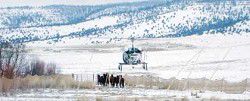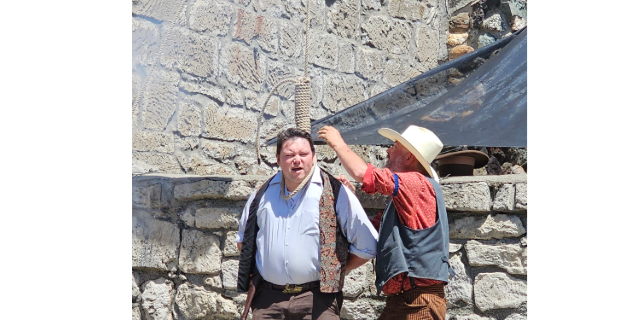Wild horses find new homes
Published 4:00 pm Tuesday, March 4, 2008

- <I>Contributed photo/Kelly Ware</I><BR>BLM contractors from Utah use a helicopter to round up horses in the Murderers Creek area during the 2007-08 wild horse gather.
DAYVILLE – The Murderers Creek horse herd will be a little smaller this year.
The U.S. Forest Service and the Bureau of Land Management (BLM) performed a wild horse gather in the Murderers Creek area during December and January. They rounded up 135 horses, roughly 25 percent of the Murderers Creek herd.
Forest Service rangeland management specialist Kelly Ware said there were about 520 horses in the area, up from the 2006 horseback census of 436 horses. The herd grows by about 20 percent a year.
The Murderers Creek Wild Horse Territory/Herd Management Area Management Plan of 2007 set the target number of horses for the area at just 50 to 140. With significantly more horses in the Murderers Creek area, the gather was necessary Ware said.
“The 50 to 140 number is based on keeping enough horses for genetic diversity and keeping the herd alive, as well as keeping the ecological impact down,” Ware said. “The area is used by other wildlife as well as people.”
The gather was primarily conducted by the Forest Service, but BLM employees and a BLM contract livestock gathering company, out of Utah, also were involved. The company specializes in helicopter drive trapping, a method that entails piloting a helicopter a distance behind a horse or group of horses to drive them towards a trap, according to Ware.
Ware said the contractors that were brought in were effective at driving the horses without causing injuries.
“They (the contractors) were really good with the horses,” Ware said. “They would stay just close enough to drive the horses, but they wouldn’t get them running. That’s important because you don’t want the horses to end up getting hurt running in that terrain.”
A pilot horse would be released when the wild horses were near the trap. The wild horses would then follow the pilot horse closer to the trap, and the helicopter would be used to push them all the way in. Men on horseback waited nearby in case the horses veered off at the last minute. Ware said that horses instinctively follow each other in herds, and they use that to their advantage during gathers.
“They always used a mare or stud to lead them,” Ware said. “The horses will see the lead horse and think they found an escape route and follow them.”
The heavy snowfall this year also helped make the gather more successful. Ware said many of the horses were pushed out of the hills and forest by the snow making it easier to track them. Ware said the horses that were caught didn’t show signs of illness or malnourishment as a result of the unusually harsh winter.
Once the horses were caught, they were taken to a temporary holding pen and later taken to the BLM Wild Horse and Burro Facility in Burns. The horses received vaccinations, branding and were studied to determine herd traits such as sex and age before they were made available for adoption.
To adopt, prospective owners must prove they can care for and house a horse. They must then care for the horse for a year and pay $125 before gaining ownership.
Ware said the horses caught in Oregon are often adopted outside the state.
“Many of the horses are adopted in the area, but a lot are sent other places,” Ware said. “They adopt a lot in the Southwest, especially in Southern California. There aren’t really wild horses in the Southwest.”
Dr. Steven Peterson, an assistant professor of plant and wildlife sciences at Brigham Young University, will visit the Murderers Creek area to study the wild horses this spring. He and a team will focus on movement, grazing and other habits of the herd.
“I”m really excited about this study,” Ware said. “We hope his information will help us better manage the area. We’ll be able to learn more about the impact on the soil. The hoof action, grazing it all plays an impact. His study might even give us a mini census.”
The Murderers Creek herd has its roots in horses escaped from Native American herds and horses that escaped from or were let loose by early settlers. The horses are generally 13 to 14 hands tall, and most live in areas heavily covered with ponderosa pine and mixed conifers. Five stallions from two BLM herds were introduced in an attempt to add genetic variation in 1997. However, the Murderers Creek herd did not accept them and they were unable to assimilate.
“The studs are really protective of their herds,” Ware said. “They don’t really allow outside studs to join. Typically most new blood that will be brought in would be from a mare.”





